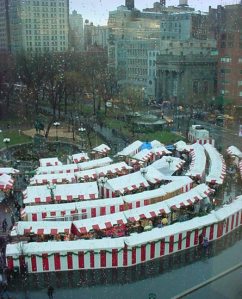The New York Times reports today that the city’s Parks Department has not been complying with a 2008 law passed by the New York City Council to “shed light on how much money was flowing into different parks across the city.” Disparities between parks across the five boroughs have been a concern, with private money allocated to specific parks, primarily located in Manhattan, not revealed and properly documented.
The legislation “required the Department of Parks and Recreation of New York City to prepare an annual report that would detail, park by park, the contributions of nonprofits and other private donors.”
At the time the law was passed, the Parks Department went on record as agreeing that it was a good idea and even suggested that it played into the Bloomberg Administration push for “transparency” (the pretense of which many of us would question).
However, surprise! The documentation from 2010 was never listed on the city’s web site and, even if it had been, it is sorely lacking in its compliance, missing data that would properly shed light on the true state of affairs in our city’s parks, the intent of the legislation. In addition, the 2011 report is seven months overdue.
From the Times:
It [the 2010 report] fails to list the city’s largest parks nonprofit, the Central Park Conservancy, which spent $28 million during that period. Other major parks groups, including the Union Square Partnership, the Madison Square Park Conservancy and the Friends of Washington Square Park, are also missing.
Stopping there for a moment. These other “major parks groups” — Union Square Partnership, Madison Square Park Conservancy, one is a BID (Business Improvement District), the other is obviously a Conservancy –are really well known. Friends of Washington Square Park? I’m not even familiar with that. (I’ll come back to that later.)
Nonetheless, Alan Gerson reappears. The former City Council Member, who previously represented the district which encompasses Washington Square and is now under Margaret Chin’s purview, so to speak, was a member of the Parks Committee, and is quoted in the story. (I wonder if Gerson will run again against Margaret Chin – who has been so disappointing – next election; that would be interesting.)
“It doesn’t reflect a real effort to comply with the law,” Alan J. Gerson, a former councilman who sat on the parks committee in 2008, said.
“Whether it’s for schools, or parks or any public place, the public should know where the private money is coming from and what it’s buying. It’s basic good government,” Mr. Gerson, a Manhattan Democrat, said.
“That’s what we wanted to establish,” he said.
The city’s Independent Budget Office concurs with the problems. Doug Turetsky, its chief of staff, states, “It’s clearly not the most illuminating. You’d want to see more detail in terms of specific amounts.”
Some things are peculiar in the article — the current Parks Committee Chair, Council Member Melissa Mark-Viverito, who has been somewhat of a champion of changes in the Parks Department’s structure, declined to comment. A spokesperson for Council Member Helen Foster who represents the Bronx and was the previous Parks Committee Chair said that Ms. Foster “did not feel she remembered the legislation.”
The Parks Department declined a request by the Times for an interview with a Parks Department “official” and offered no rationale for the incomplete data. My guess is that this data would not reflect favorably and that’s exactly what the City Council was pushing for – to see what – and how – resources are allocated to, say, Central Park vs. Pelham Bay Park in the Bronx.
As for the “major parks group,” Friends of Washington Square Park (an organization, as I mentioned, with which I’m not even familiar), via a Google search, I see that it is now listed on the Washington Square Association’s web site (and given pretty much equal ‘billing,’ so to speak, listed on a line with the organization’s name). That seems a bit, uh, dubious. However, such is the world of the city’s parks under the Bloomberg Administration.
* * *
Previously at WSP Blog:
Privatization, Concessions and New York City Parks October 8, 2010










